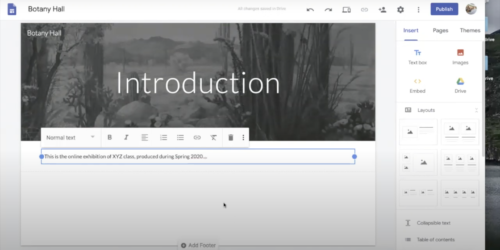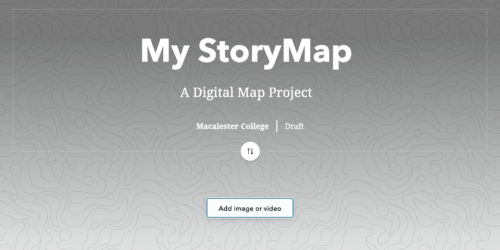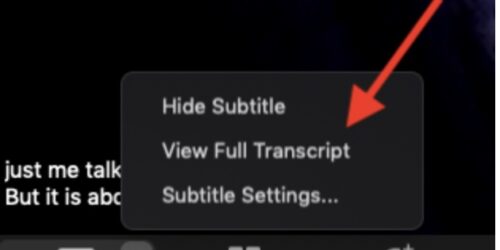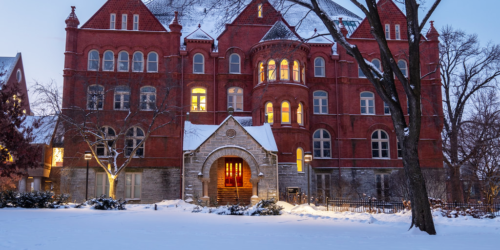Creating an Online Exhibition
Toolkit of Resistance: An Online Exhibit Prepared by “The Native Southwest” in conjunction with the San Pasqual Band of Kumeyaay
Naomi Sussman, Visiting Instructor, History
This semester (Spring 2020), I intended for the final assignment in my “The Native Southwest” class to be a prototype exhibit for the San Diego Old Courthouse, after the City of San Diego approached me for help remaking an existing exhibit that celebrates the conquest of Native peoples in Southern California. I selected our readings and assignments to give students sufficient historical background on nineteenth-century California to engage in knowledgeable primary source analysis, and to guide conversations about the ethics and methodologies of Indigenizing museum curation. Over the course of the semester, we met digitally with the San Pasqual Band of the Kumeyaay Nation to discuss their priorities for a prospective exhibit, with Professor Natale Zappia to discuss Indigenizing historical production, and with Alex Buffalohead to talk about the possibilities of Indigenizing museum work (Dakota, Arts and Cultural Engagement Manager at the Native American Community Development Institute and All My Relations Art Gallery in Minneapolis).
After we transitioned online, my students and I transformed what was originally intended to be a physical museum exhibit into a digital exhibit. Students had already completed the initial assignments outlined below (creating a class database with a primary source reflection, a short paper reflecting on the way a short movie called “Frontera! Revolt and Rebellion on the Rio Grande” arranged the history of Pueblo resistance into a meaningful narrative for a popular audience, and a primary source analysis) in preparation for a group brainstorm about the shape of our exhibit. During our final in-person class session, I placed students into two groups and they brainstormed possible formats and “big ideas” for our exhibit. They decided to organize the exhibit around a theme of “resistance and survivance,” and devised a “choose-your-own” adventure model based on the “Broken Promises” exhibit from the Minnesota Historical Society.
I decided to offer students a little more direction than I had initially planned, since we were going to have to learn how to use Google Sites in addition to crafting a compelling and engaging exhibit. I built the skeleton of the website on Google Sites, then circulated the document in this folder entitled “Toolkit of Resistance Concept Map” and asked students to select the “tool” that most appealed to them. Next, they wrote short, primary-source research papers organized around the “tool” they had selected; most, although not all, of them used the documents they had selected for our primary source database and primary source analysis assignments as I originally intended. The culmination of their individual contribution to the exhibit was an interpretive label for the tool they had selected (e.g. the student who chose “Education” wrote an interpretive label about education as resistance that drew on a vignette they had used for their research paper, and explained how it supported the larger concept of the Toolkit of Resistance.) Students gave feedback on two of their peers’ interpretive labels by creating a text box at the bottom of the “tool” sites and offering suggestions.
Finally, I assigned students into three groups of three to craft the framing pieces of the website (the introductory text, community histories, California’s colonial history, and the closing text), and gave them supporting resources in our class google drive in addition to detailed assignment sheets. The groups drafted the framing text and I offered them feedback. We concluded our semester by presenting the individual tools and the vignettes that illustrated them.
Assignments:
Pre-pandemic Assignment Sheets
Old San Diego Courthouse Exhibit
This class is oriented around the co-creation of a prototype explanatory exhibit for the original courthouse in San Diego, California. We will craft this exhibit together over the course of the semester, and most class assignments build toward this goal. The following assessments are a combination of in-class and independent activities that will help us on our way.
Document Database and Source Reflection:
In this assignment, you will (1) select one of the primary sources that I’ve curated for the class (a range of archival documents and printed primary sources), (2) transcribe it if necessary, (3) write an informal 600 word reflection on an element in the source that you find interesting, and (4) tag it with some keywords of your choice. The source and accompanying reflection are both due at 11:59 PM on February 7 to class Google Drive folder.
Primary Source Analysis:
In this assignment, you will select one of the sources from our database and develop an argument-driven, 3-5 page paper based on a close “reading” of that source. You should use at least one secondary source to write a paragraph explaining the context in which the source was created. Due February 21 at 11:59 PM to Moodle dropbox.
Reflection Papers:
These short papers will be graded Credit (√)/No-Credit (NC)/Distinction (DS).
- Reflection Paper #1: In this assignment, you will write a 400-600 word reflection considering (1) thematic continuities you see between the documents in our Document Database, (2) how ““Frontera! Revolt and Rebellion on the Rio Grande” arranges history of Pueblo resistance into a meaningful narrative for a popular audience, and how we might arrange our database into a narrative that provides the basis for our exhibit. Due in class February 12.
- Reflection paper #2: In this assignment, you will write 400-600 word reflection on ethical, collaborative, and decolonizing curation and exhibit design. This paper should respond to our readings from Deanna Dartt-Newton and Ann Lonetree, and conversation with Alex Buffalohead. Due on Monday, April 13 at 11:59 PM to Moodle dropbox.
In-class brainstorms, round 1:
1. In-class identification and ownership of core themes. We will do this on March 27—please try your hardest to attend class. If you can’t attend, you will be expected (1) to write a 400-word response describing potential core themes for the exhibit, and (2) to communicate with me and your classmates about what theme you will investigate.
2. In-class brainstorming about narrative, audience, stakeholders, and physical experience of exhibit. We will do this on April 6—please try your hardest to attend class. If you can’t attend, you will be expected to write a 400-word piece responding to these questions.
Short research paper:
Our exhibit will tell a larger story about a particular time, place, and set of actors—but that story will contain many smaller stories within it. Some of these stories (pivotal events—a battle, a hanging, an indenture case) are essential to the larger story you tell. In this 4-6 page paper, you will build on your work in your Primary Source Analysis to write a narrative research paper around your class-assigned theme, using 2-3 primary sources and 2-3 secondary sources to support your analysis. This paper will inform the informational label you develop for the exhibit. Due by 11:59 PM on April 10 to Moodle dropbox.
Informational Label: 100-150 words:
In this assignment, you will distill your research paper into a 100-150 word informational label and vignette about your “tool.” Due by 11:59 PM on April 24 to class Google Sites.
NEW ASSIGNMENT (Online)—Writing Partner Review Session: During Week 14, meet with your review partners and give each other feedback on the argumentation, main ideas, and structure of the other person’s research paper.
Week 15 (Individual) (Online)—Google Site
1. Begin to build your Google Site within the larger class site. Each student should build the site associated with their “tool,” incorporating:
a. Their interpretive label
b. Relevant, open-access images found on Calisphere or elsewhere (e.g. Flickr) with attributions (where it came from).
c. Labels should clearly reinforce the central “narrative” (Native peoples in SoCal have built a “toolkit of resistance” to protect their communities)
d. The site should link to the other tools suggest which other tools you want to link your own tool to. Draft sites are due on May 1.
e. If you need help, reach out to Naomi, Aisling Quigley (Digital Humanities Postdoc), or Benjamin Voigt (Humanities AIA).
UPDATED ASSIGNMENT (Online)—Week 15 (Collective)
1. Between April 20 and May 1, we will draft co-created introduction and conclusion labels on Google Docs. Final slides due May 1.
a. Group 1 will be responsible for the introductory text and brief tribal histories for the Kumeyaays and Quechans.
b. Group 2 will be responsible for brief tribal histories for the Cupeños, Luiseños, and Cahuillas.
c. Group 3 will be responsible for the Invaders Slide and Concluding Slide.
UPDATED ASSIGNMENT (Online)—Presentations
5 minute presentation of your “tool,” the vignette you used to illustrate it, and how your individual site reflects the larger narrative and argument of the class website. Presentations will take place in our May 4 Zoom meeting.
UPDATED ASSIGNMENT (Online)—Final Website
The final draft of your individual website is due by 10:50 AM CDT on May 4 (that is, by the start of class). The final website should be visually compelling and consistent and communicate our chosen narrative to visitors. You will be expected to work with me and your classmates to make this website the best it can possibly be, given our constraints.
Core readings and framing for Decolonizing/Indigenizing Museums:
- Introduction, Linda Tuhiwai Smith, Decolonizing Methodologies [Moodle]
- Introduction, Amy Lonetree, Decolonizing Museums [Moodle]
- Deanna Dartt-Newton, “California’s Sites of Conscience: An Analysis of the State’s Historic Mission Museums,” Museum Anthropology, Vol. 34, Iss. 2, pp. 97-108 [e-copy: https://macalester.on.worldcat.org/oclc/5153884442 ]
- Chapter 1, “Collaboration Matters,” in Amy Lonetree, Decolonizing Museums [Moodle]
- Heid E. Erdrich and Andrea Carlson, “Toward Ending Museum Violence,” in conjunction with Nicholas Galanin’s exhibition, “Everything We’ve Ever Been, Everything We Are Right Now,” December 5, 2020, Macalester College





